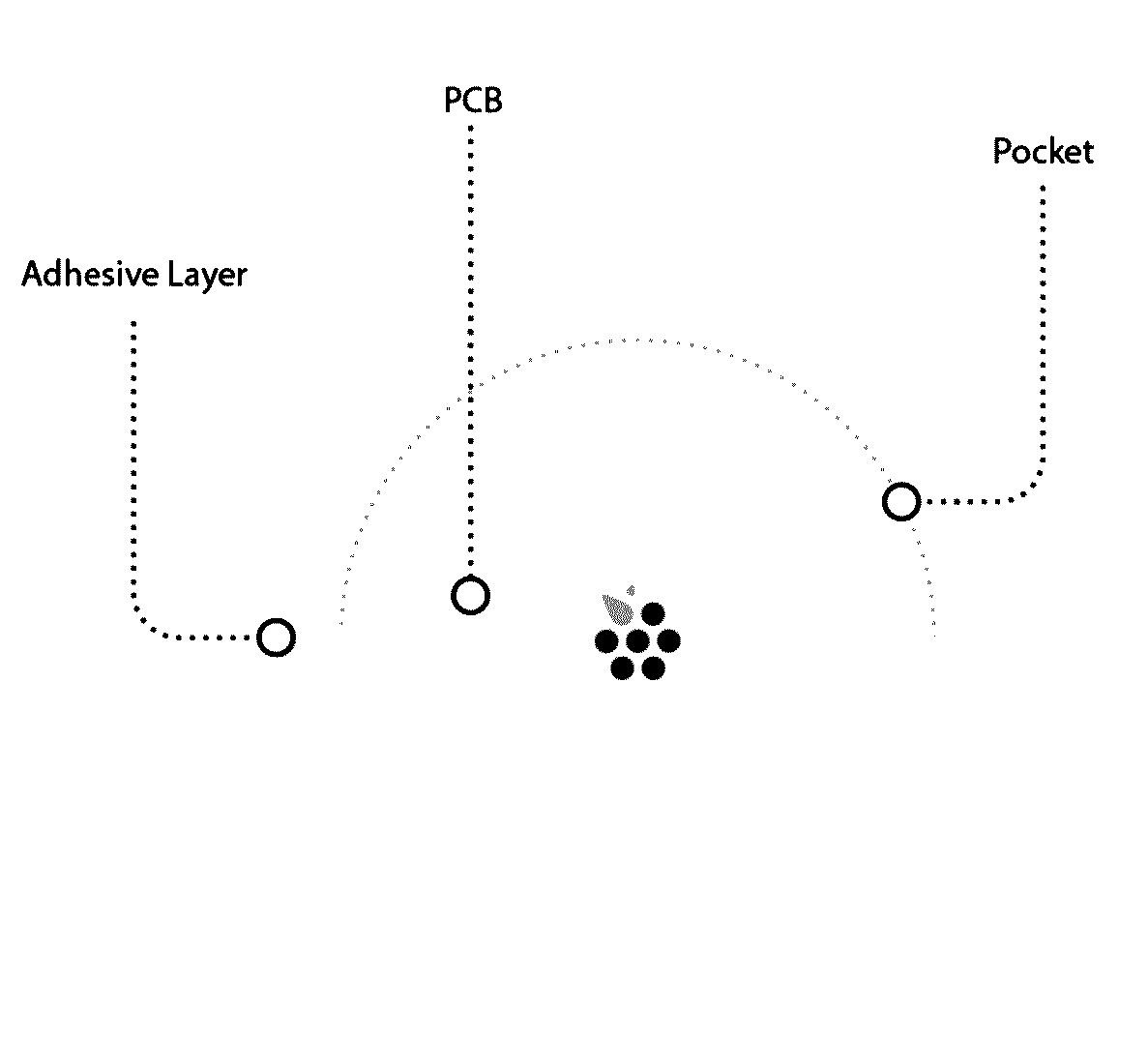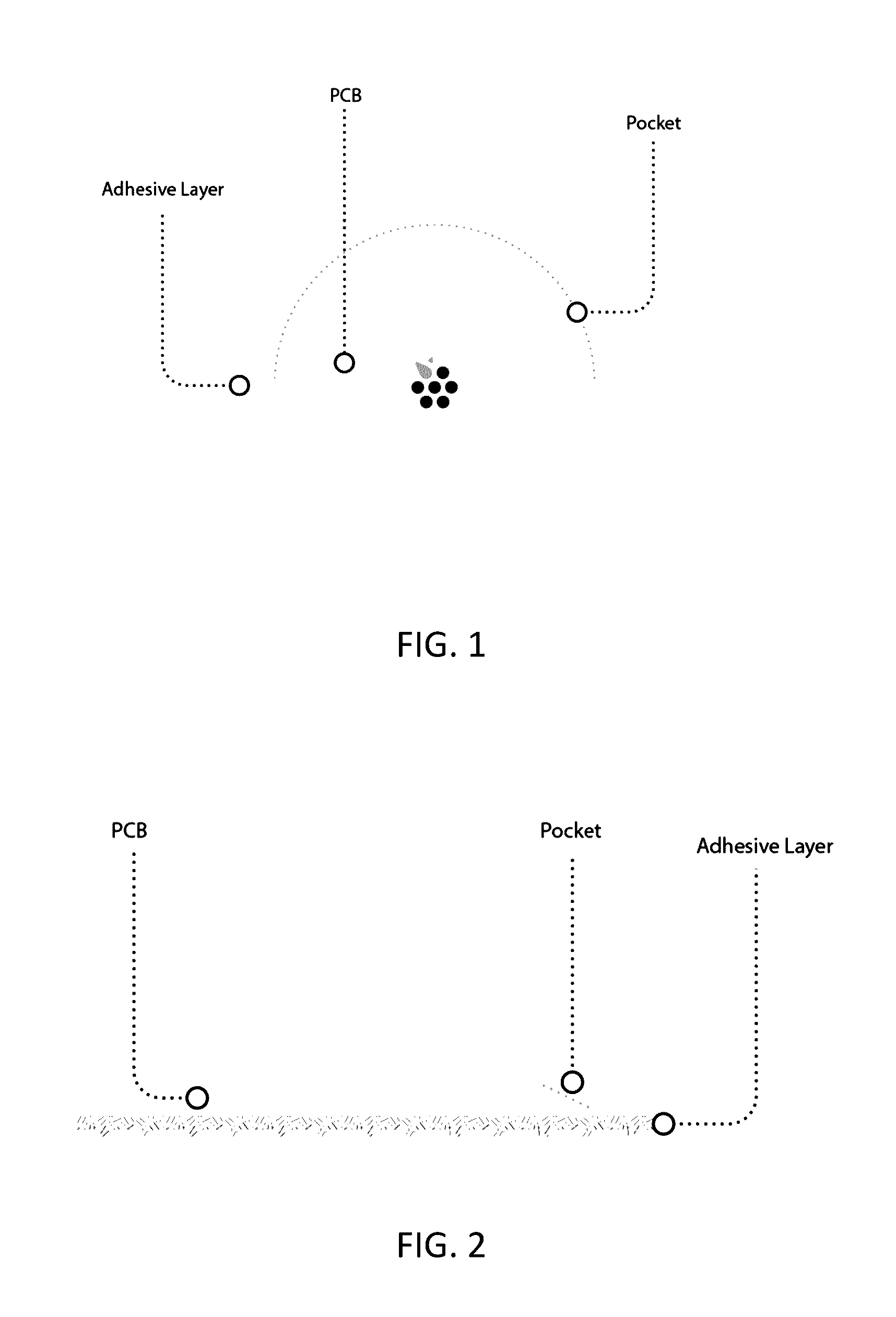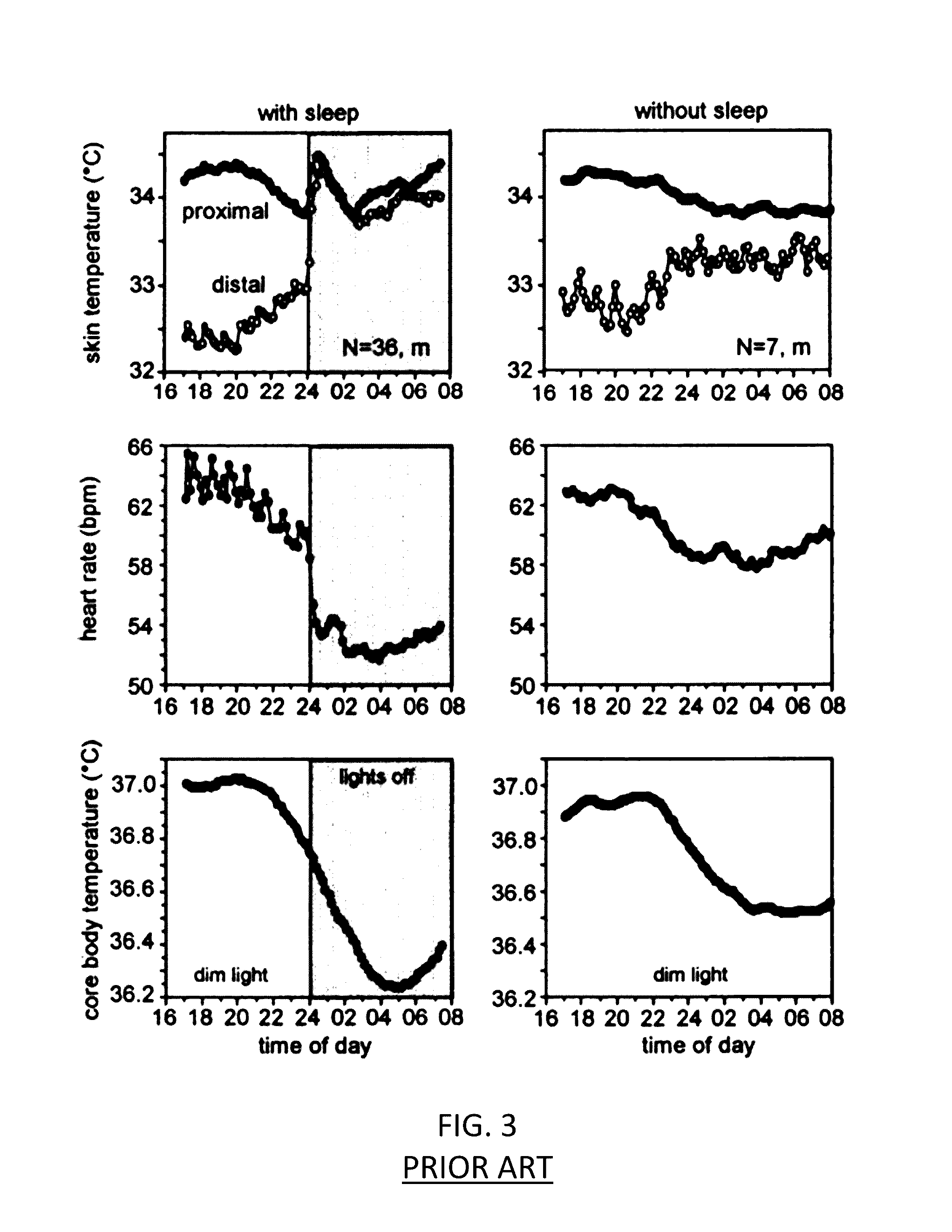Core body temperature system
a core body temperature and system technology, applied in the field of system for approximating core body temperature, can solve the problems of affecting diagnosis and treatment, compromising patient health, affecting treatment effect, etc., and achieve the effect of accurate estimation
- Summary
- Abstract
- Description
- Claims
- Application Information
AI Technical Summary
Benefits of technology
Problems solved by technology
Method used
Image
Examples
embodiment 1
[0099]A method to determine a physiological function result, comprising: determining the temperature of a first body location on a subject to obtain a first body temperature value; optionally determining the temperature of a second body location on a subject to obtain a second body temperature value; optionally determining the ambient temperature to determine an ambient temperature value; obtaining a physiological function result from a predetermined prediction equation, wherein the obtaining comprises a comparison of the amplitude of the temperature values, the mesor of the temperature values, the mean of the temperature values, the nadir of the temperature values, the peak of the temperature values, or the acrophase of the temperature values, or a combination comprising one or more of the foregoing.
embodiment 2
[0100]The method of Embodiment 1, wherein the obtaining comprises inputting the temperature values into the predetermined prediction equation.
embodiment 3
[0101]The method of Embodiment 1, further comprising determining a temperature value at more than one time.
PUM
 Login to View More
Login to View More Abstract
Description
Claims
Application Information
 Login to View More
Login to View More - R&D
- Intellectual Property
- Life Sciences
- Materials
- Tech Scout
- Unparalleled Data Quality
- Higher Quality Content
- 60% Fewer Hallucinations
Browse by: Latest US Patents, China's latest patents, Technical Efficacy Thesaurus, Application Domain, Technology Topic, Popular Technical Reports.
© 2025 PatSnap. All rights reserved.Legal|Privacy policy|Modern Slavery Act Transparency Statement|Sitemap|About US| Contact US: help@patsnap.com



